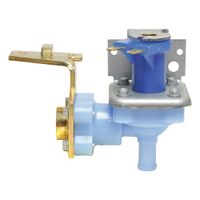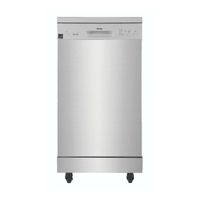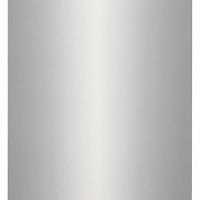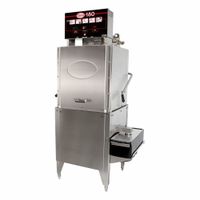Call +(254) 703 030 000 / 751 483 999 / 721 704 777
- Home
- Furnishings Appliances Hospitality
- Appliances
- Dishwashers
Frequently Asked Questions
How do dishwashers clean and rinse dirty dishes?
Dishwashers clean and rinse dirty dishes through a systematic process involving several key steps. Initially, the user loads the dishwasher with dirty dishes, ensuring they are properly arranged to allow water and detergent to reach all surfaces. Once the door is closed and the cycle is started, the dishwasher begins by filling the bottom basin with water. This water is then heated to a temperature typically between 120°F and 160°F (49°C to 71°C), which helps dissolve and activate the detergent.
The detergent, either in liquid, powder, or pod form, is released into the water. The dishwasher's pump then propels this soapy water through spray arms, which are equipped with nozzles that rotate and spray the water with force. This action dislodges food particles and grease from the dishes. The spray arms are strategically placed to ensure that water reaches all items, including those on the top and bottom racks.
After the wash cycle, the dishwasher drains the dirty water and refills with fresh water for the rinse cycle. During rinsing, the spray arms again distribute clean water to remove any remaining detergent and food particles. Some dishwashers include a rinse aid, which is dispensed during this cycle to prevent water spots and enhance drying by reducing the surface tension of water.
Finally, the dishwasher enters the drying phase. Depending on the model, this may involve a heating element that warms the air inside the dishwasher or a fan that circulates air to evaporate moisture. Some energy-efficient models use condensation drying, where the residual heat from the wash cycle is used to dry the dishes. Once the cycle is complete, the dishes are clean, sanitized, and ready to be unloaded.
What is the difference between an undercounter dishwasher and a portable dishwasher?
An undercounter dishwasher is a built-in appliance installed beneath the kitchen countertop, typically integrated into the cabinetry. It is a permanent fixture, requiring professional installation, including plumbing and electrical connections. Undercounter dishwashers are designed to blend seamlessly with the kitchen's aesthetic, often featuring a front panel that matches the cabinetry. They offer a range of features, including multiple wash cycles, energy efficiency, and advanced cleaning technologies. These dishwashers are ideal for households with sufficient kitchen space and a need for frequent dishwashing.
In contrast, a portable dishwasher is a freestanding unit that can be moved as needed. It does not require permanent installation and connects to the kitchen faucet when in use. Portable dishwashers are equipped with wheels for easy mobility and can be stored away when not in use, making them suitable for smaller kitchens or rental properties where permanent modifications are not feasible. They typically have a smaller capacity compared to undercounter models and may offer fewer features. However, they provide flexibility and convenience for those with limited space or who move frequently.
The primary differences between the two types of dishwashers lie in their installation, mobility, and capacity. Undercounter dishwashers are permanent, space-efficient, and often more feature-rich, while portable dishwashers offer flexibility, ease of installation, and are ideal for temporary or space-constrained living situations.
How do I properly load a dishwasher for optimal cleaning?
To load a dishwasher for optimal cleaning, start by scraping off large food particles from dishes, but avoid pre-rinsing as modern dishwashers and detergents are designed to handle some residue. Place plates and bowls in the bottom rack, facing the center, ensuring they don't overlap. Pots and pans should be angled downward for better water flow.
Utensils should be mixed in the cutlery basket to prevent nesting; alternate between handles up and down for safety and thorough cleaning. Larger utensils like spatulas should be placed on the top rack or laid flat to avoid blocking the spray arms.
The top rack is ideal for cups, glasses, and smaller items. Angle them slightly downward to prevent water from pooling. Ensure that plastic items are placed on the top rack to avoid melting.
Avoid overcrowding, as this can block water and detergent from reaching all surfaces. Ensure that nothing obstructs the spray arms from rotating freely.
Use the appropriate detergent and select the right cycle based on the load's soil level. For heavily soiled items, a longer or more intense cycle may be necessary.
Finally, check that the dishwasher's filter is clean and free of debris to maintain optimal performance.
What are the best detergents to use in a dishwasher?
The best detergents for dishwashers typically include a combination of cleaning power, residue-free results, and environmental considerations. Some top options are:
1. **Finish Quantum**: Known for its powerful cleaning action, Finish Quantum tablets combine powder, gel, and liquid to tackle tough stains and leave dishes sparkling. They also include a rinse aid for a streak-free finish.
2. **Cascade Platinum**: These pods are highly effective at removing stuck-on food and grease. Cascade Platinum contains built-in rinse aid and water softeners, which help prevent spots and film on dishes.
3. **Seventh Generation Free & Clear**: Ideal for those seeking an eco-friendly option, this detergent is free from dyes, fragrances, and phosphates. It effectively cleans dishes while being gentle on the environment.
4. **Ecover Automatic Dishwasher Tablets**: Another environmentally friendly choice, Ecover tablets are biodegradable and phosphate-free. They offer strong cleaning performance with plant-based ingredients.
5. **Kirkland Signature Premium Dishwasher Pacs**: Available at Costco, these pacs provide excellent value and performance. They are effective at cutting through grease and leaving dishes clean without residue.
6. **Method Smarty Dish Plus**: These tablets are phosphate-free and use naturally derived ingredients. They are effective at cleaning and are a good choice for those looking for a more sustainable option.
7. **Lemi Shine Detergent Booster**: While not a detergent itself, Lemi Shine can be used alongside your regular detergent to enhance cleaning power, especially in hard water areas. It helps remove hard water stains and mineral buildup.
When choosing a detergent, consider factors like water hardness, environmental impact, and specific cleaning needs. Always follow the manufacturer's instructions for the best results.
How do I maintain and clean my dishwasher?
1. **Regular Cleaning**: After each cycle, remove food debris from the bottom of the dishwasher. Wipe down the door edges and gasket with a damp cloth to prevent mold and mildew.
2. **Monthly Deep Clean**: Run an empty cycle with a dishwasher cleaner or a cup of white vinegar placed on the top rack. This helps remove grease and odors. Follow with a baking soda rinse by sprinkling a cup of baking soda on the bottom and running a short hot water cycle.
3. **Filter Maintenance**: Check and clean the filter regularly, usually located at the bottom of the dishwasher. Remove it, rinse under running water, and scrub with a soft brush if necessary.
4. **Spray Arms**: Remove and clean the spray arms to ensure they are not clogged. Use a toothpick or small brush to clear any blockages in the holes.
5. **Check Seals and Gaskets**: Inspect the door seals and gaskets for any signs of wear or damage. Clean them with a damp cloth to ensure a proper seal.
6. **Inspect and Clean the Drain**: Ensure the drain is clear of debris. Remove any visible obstructions to prevent clogs.
7. **Use the Right Detergent**: Always use a detergent specifically designed for dishwashers. Avoid using too much detergent, as it can leave residue.
8. **Water Softener**: If you have hard water, consider using a water softener or a dishwasher salt to prevent mineral buildup.
9. **Check for Leaks**: Regularly inspect hoses and connections for leaks. Tighten or replace as necessary.
10. **Run Hot Water**: Before starting a cycle, run the hot water in your sink to ensure the dishwasher starts with hot water, improving cleaning efficiency.
What should I do if my dishwasher is not cleaning dishes properly?
1. **Check and Clean the Filter**: Remove and clean the dishwasher filter to ensure it's not clogged with food particles.
2. **Inspect Spray Arms**: Ensure spray arms are not blocked. Remove and clean them to clear any debris or mineral deposits.
3. **Use the Right Detergent**: Ensure you're using a high-quality detergent suitable for your water type (hard or soft).
4. **Load Dishes Correctly**: Avoid overloading and ensure dishes are not blocking spray arms. Place items facing downwards and avoid nesting.
5. **Check Water Temperature**: Ensure the water temperature is at least 120°F (49°C) for effective cleaning. Adjust your water heater if necessary.
6. **Run Hot Water Before Starting**: Run the kitchen tap until the water is hot before starting the dishwasher to ensure hot water enters the machine immediately.
7. **Use Rinse Aid**: Add rinse aid to prevent spots and improve drying.
8. **Clean the Dishwasher**: Run an empty cycle with a dishwasher cleaner or a cup of vinegar to remove buildup.
9. **Check for Hard Water**: If you have hard water, consider using a water softener or a detergent with built-in softeners.
10. **Inspect the Door Seal**: Ensure the door seal is clean and intact to prevent leaks and maintain pressure.
11. **Examine the Drain Hose**: Ensure the drain hose is not kinked or clogged.
12. **Test the Float Switch**: Ensure the float switch is not stuck, which can prevent the dishwasher from filling properly.
13. **Check for Mechanical Issues**: Listen for unusual noises that might indicate a mechanical problem.
14. **Consult the Manual**: Refer to the dishwasher’s manual for specific troubleshooting tips.
15. **Call a Professional**: If issues persist, contact a professional technician for diagnosis and repair.
How much water and energy does a dishwasher use compared to hand washing?
A dishwasher typically uses between 3 to 5 gallons (11 to 19 liters) of water per cycle, depending on the model and efficiency. Energy consumption for dishwashers ranges from about 1 to 2 kWh per load. Modern Energy Star-rated dishwashers are designed to be more efficient, using less water and energy compared to older models.
In contrast, hand washing dishes can use significantly more water. On average, hand washing can consume about 20 gallons (75 liters) of water, depending on the method and duration. If the tap is left running, water usage can be even higher. Energy consumption for hand washing is less straightforward to measure, as it primarily involves the energy used to heat the water. This can vary widely based on the temperature of the water and the efficiency of the water heater.
Overall, dishwashers are generally more water and energy-efficient than hand washing, especially when running full loads. They are designed to optimize water usage and often have settings for different load sizes and soil levels, further enhancing efficiency. Additionally, dishwashers can reach higher temperatures than most people use for hand washing, which can improve cleaning effectiveness and hygiene.
In summary, using a modern dishwasher is typically more efficient in terms of both water and energy consumption compared to hand washing, provided it is used with full loads and appropriate settings.



